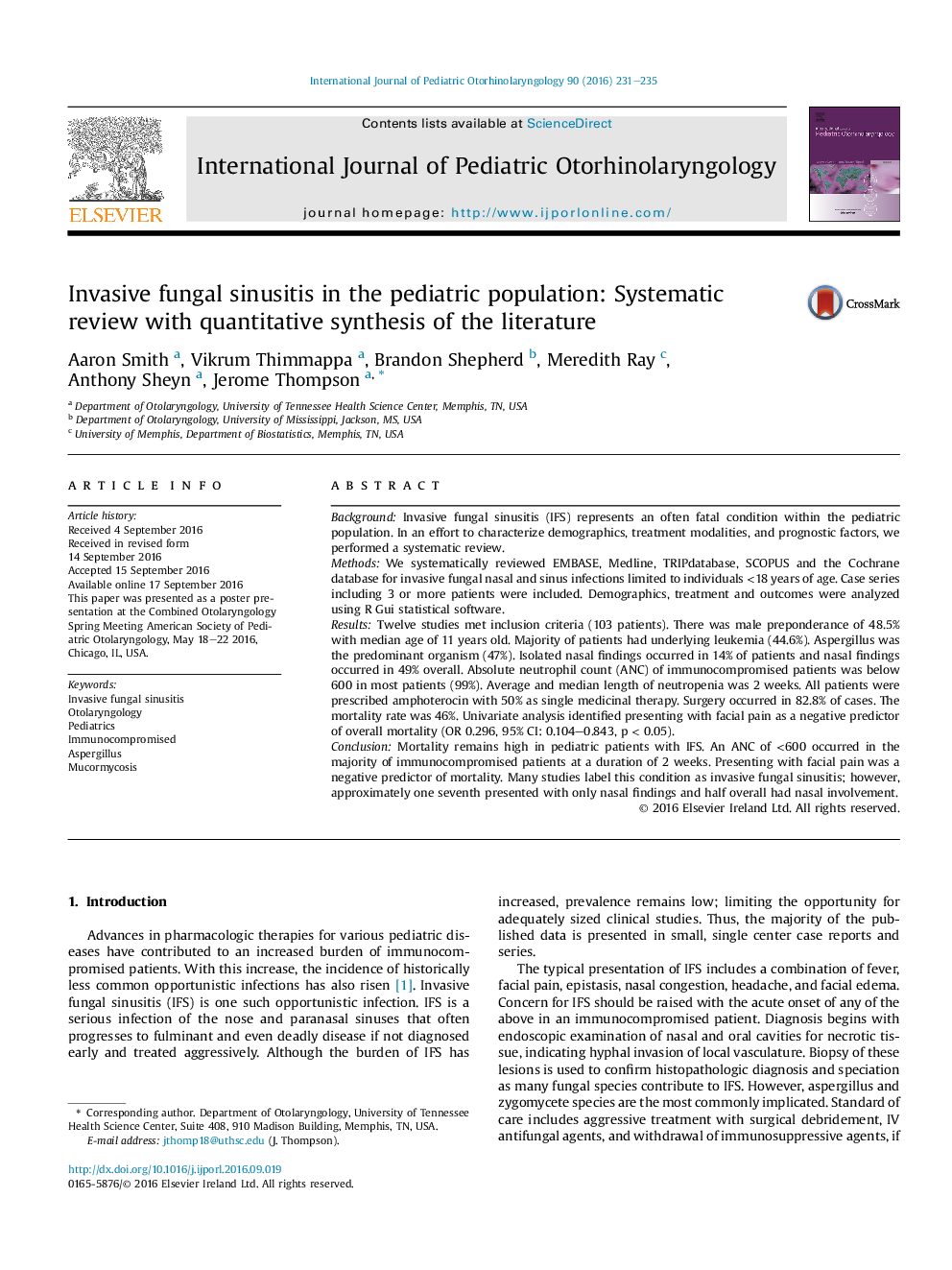| Article ID | Journal | Published Year | Pages | File Type |
|---|---|---|---|---|
| 6213033 | International Journal of Pediatric Otorhinolaryngology | 2016 | 5 Pages |
BackgroundInvasive fungal sinusitis (IFS) represents an often fatal condition within the pediatric population. In an effort to characterize demographics, treatment modalities, and prognostic factors, we performed a systematic review.MethodsWe systematically reviewed EMBASE, Medline, TRIPdatabase, SCOPUS and the Cochrane database for invasive fungal nasal and sinus infections limited to individuals <18 years of age. Case series including 3 or more patients were included. Demographics, treatment and outcomes were analyzed using R Gui statistical software.ResultsTwelve studies met inclusion criteria (103 patients). There was male preponderance of 48.5% with median age of 11 years old. Majority of patients had underlying leukemia (44.6%). Aspergillus was the predominant organism (47%). Isolated nasal findings occurred in 14% of patients and nasal findings occurred in 49% overall. Absolute neutrophil count (ANC) of immunocompromised patients was below 600 in most patients (99%). Average and median length of neutropenia was 2 weeks. All patients were prescribed amphoterocin with 50% as single medicinal therapy. Surgery occurred in 82.8% of cases. The mortality rate was 46%. Univariate analysis identified presenting with facial pain as a negative predictor of overall mortality (OR 0.296, 95% CI: 0.104-0.843, p < 0.05).ConclusionMortality remains high in pediatric patients with IFS. An ANC of <600 occurred in the majority of immunocompromised patients at a duration of 2 weeks. Presenting with facial pain was a negative predictor of mortality. Many studies label this condition as invasive fungal sinusitis; however, approximately one seventh presented with only nasal findings and half overall had nasal involvement.
